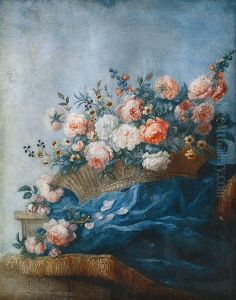Jeanne-Mathilde Herbelin Paintings
Jeanne-Mathilde Herbelin, a notable French painter, was born in 1820 and passed away in 1904. Her life spanned much of the 19th century, a period rich in artistic evolution and the emergence of various art movements in Europe. Herbelin is particularly recognized for her contributions to portrait painting, though her repertoire also included genre scenes and landscapes. Her work, characterized by its delicate sensitivity and refinement, reflects the influence of the Romantic and early Impressionist movements, yet Herbelin maintained a distinctive style that set her apart from her contemporaries.
Trained in the prestigious art circles of Paris, Jeanne-Mathilde Herbelin honed her skills under the guidance of established artists of her time. Despite the gender constraints of the period, which often limited women's access to formal art education and professional opportunities, Herbelin's talent and determination allowed her to carve a niche for herself in the competitive Parisian art scene. She exhibited her work at the Paris Salon, a major venue for artists to showcase their work and gain recognition, from the 1840s onwards. Her paintings were well-received by critics and the public alike, earning her accolades and medals that underscored her standing as a respected artist in France.
Herbelin's artistic legacy is significant for several reasons. Firstly, her success as a female artist in a male-dominated field challenged prevailing norms and opened doors for future generations of women in art. Secondly, her work provides insight into the social and cultural milieu of 19th-century France, offering valuable perspectives on the aesthetics and thematic concerns of the era. Lastly, her portraits, often depicting women and children, are celebrated for their emotional depth and technical precision, showcasing her ability to capture the essence of her subjects with empathy and skill. Today, Jeanne-Mathilde Herbelin's paintings are held in collections both in France and internationally, serving as a testament to her enduring contribution to the world of art.


